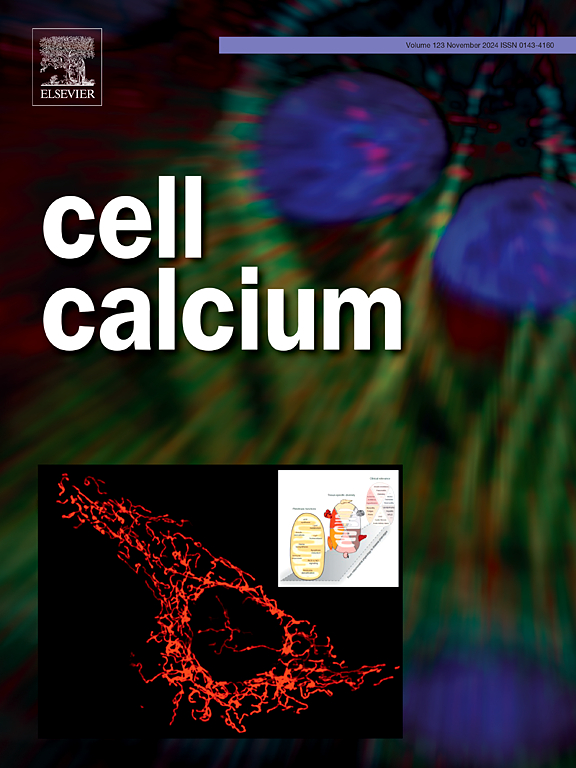Silencing CALB1 enhances prostate cancer radiosensitivity via calcium-mediated mitochondrial dysfunction and cellular senescence
IF 4
2区 生物学
Q2 CELL BIOLOGY
引用次数: 0
Abstract
Background
Prostate cancer remains a leading cause of cancer-related deaths in men, with radioresistance limiting treatment efficacy. This study investigates the role of Calbindin 1 (CALB1), a calcium-binding protein regulated by miR-186–5p, in prostate cancer progression and radiation response.
Methods
CALB1 expression was analyzed using GEO and TCGA datasets, and the regulatory relationship with miR-186–5p was validated. Functional studies including CALB1 knockdown, calcium chelation, and mitochondrial rescue interventions were conducted in prostate cancer cells, spheroids, and xenograft models, assessing proliferation, senescence, calcium homeostasis, and radiation response.
Results
We identified CALB1 as a target of downregulated miR-186–5p in prostate cancer. CALB1 silencing inhibited prostate cancer growth by inducing cellular senescence through calcium dysregulation, mitochondrial dysfunction, and oxidative stress. CALB1 depletion significantly enhanced radiosensitivity both in vitro and in vivo, with calcium chelation or mitochondrial interventions partially rescuing these effects.
Conclusions
CALB1 regulates prostate cancer progression and radiation response by maintaining calcium homeostasis. Its depletion triggers calcium overload and mitochondrial dysfunction, enhancing radiation sensitivity and identifying CALB1 as a potential therapeutic target.
沉默CALB1可通过钙介导的线粒体功能障碍和细胞衰老增强前列腺癌的放射敏感性
前列腺癌仍然是男性癌症相关死亡的主要原因,放射耐药限制了治疗效果。本研究探讨了钙结合蛋白1 (CALB1),一种由miR-186-5p调节的钙结合蛋白,在前列腺癌进展和放射反应中的作用。方法利用GEO和TCGA数据集分析scalb1的表达,验证其与miR-186-5p的调控关系。在前列腺癌细胞、球状体和异种移植模型中进行了功能研究,包括CALB1敲除、钙螯合和线粒体拯救干预,评估了增殖、衰老、钙稳态和辐射反应。我们发现CALB1是前列腺癌中miR-186-5p下调的靶标。CALB1沉默通过钙失调、线粒体功能障碍和氧化应激诱导细胞衰老,从而抑制前列腺癌的生长。CALB1缺失显著增强了体外和体内的放射敏感性,钙螯合或线粒体干预部分挽救了这些作用。结论scalb1通过维持钙稳态调节前列腺癌的进展和放射反应。它的消耗引发钙超载和线粒体功能障碍,增强辐射敏感性,并将CALB1确定为潜在的治疗靶点。
本文章由计算机程序翻译,如有差异,请以英文原文为准。
求助全文
约1分钟内获得全文
求助全文
来源期刊

Cell calcium
生物-细胞生物学
CiteScore
8.70
自引率
5.00%
发文量
115
审稿时长
35 days
期刊介绍:
Cell Calcium covers the field of calcium metabolism and signalling in living systems, from aspects including inorganic chemistry, physiology, molecular biology and pathology. Topic themes include:
Roles of calcium in regulating cellular events such as apoptosis, necrosis and organelle remodelling
Influence of calcium regulation in affecting health and disease outcomes
 求助内容:
求助内容: 应助结果提醒方式:
应助结果提醒方式:


